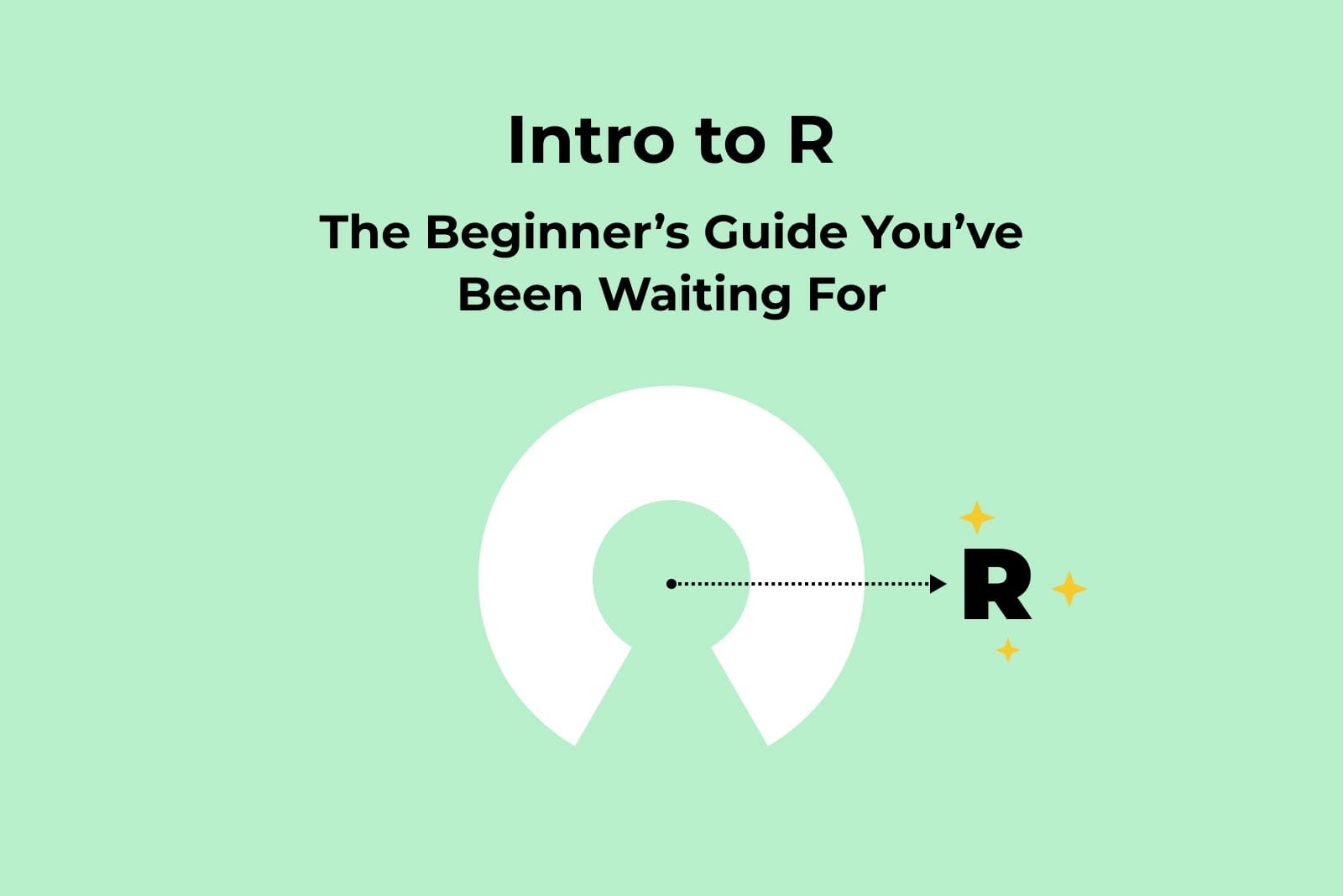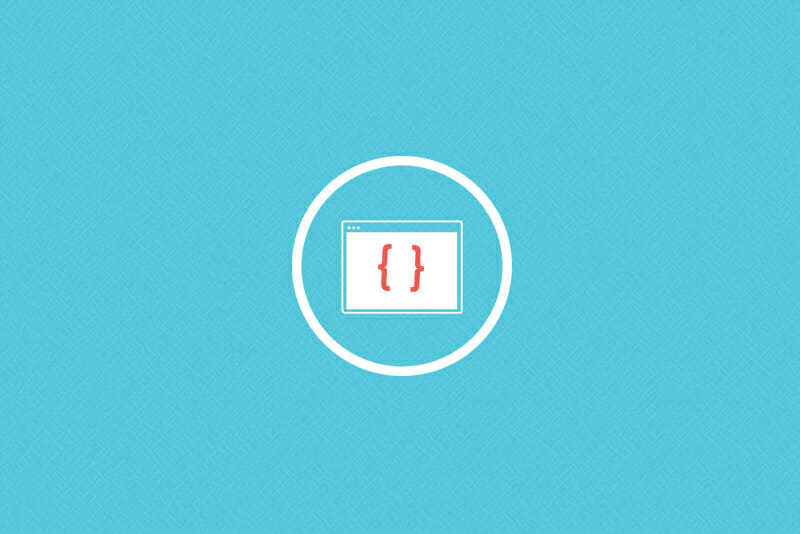Intro to R: The Beginner’s Guide You’ve Been Waiting For

If you’re one of the 640 million Spotify users who waits—impatiently, if you’re like me—for your Spotify Wrapped at the end of the year, you already know exactly what R can do. You’ve experienced how Spotify takes our raw listening data—everything from your favorite songs to your most played artists—and transforms it into visually beautiful, sharable results. If you ask me, it’s the perfect example of what specialized tools can do with statistics and data.
Now, I—and a lot of Spotify users—would argue that last year’s Wrapped didn’t quite hit the mark. I mean, thanks, Spotify, but I already knew that BTS, Ariana Grande, and Emotional Oranges were my top artists for the year. What happened to more advanced analytics like Sound Town, where you matched my listening and artist affinity to a random town in the world? Or the listening personality archetypes? But, even with the disappointment, Spotify Wrapped still did what it always does—makes data meaningful and easy to digest. At the end of the year, Spotify took your listening habits and compiled them into pretty interfaces to share information about your top songs and artists.
This is the intersection of statistics, data, and data visualization that the R programming language makes possible.
So, what is R? Whether it’s something like Spotify Wrapped or any other data-driven project, R can power the process behind the scenes. Here’s a beginner’s look into R—what it is, how it’s being used for data science and machine learning, and how you can learn it.
Table of Contents
What is R?
If you’re even a little bit into data analysis, you’ve probably heard of R. It’s an open-source programming language that has some of the world—mostly the statistical world—in a chokehold. It’s a big deal for a few reasons. For one, it’s free, and there aren’t any crazy licensing fees or hidden costs to use it. Two, you can download, tweak, and share it across all operating systems—no matter if you’re loyal to Windows, macOS, or Linux. Okay, okay, you’re probably thinking that none of this makes R that much different from the other open-source programming languages like Python, JavaScript, and C++, but R does have its unique benefits—more on that later.
R programming language was created back in the early ‘90s by Ross Ihaka and Robert Gentleman. Originally, it was an implementation (think spin-off) of the S programming language, but over time, R has developed into something much bigger than S.
So why should you care about R today? With the huge shift towards big data, R is a go-to language for anything related to statistics, data analysis, and machine learning. For example, you could use it to run a linear regression and figure out different relationships between variables. In simpler terms, imagine you have an online store. You could predict how much your store’s sales will increase after running a marketing campaign. Whether it’s this or using time-series forecasting to predict future stock prices, data scientists and the like are often handling queries like this (and more) with R.
R might’ve started as a project for statisticians, but it’s now the preferred language for data scientists, analysts, and anyone serious about doing a deep dive into data. With its ability to churn out clean visualizations, it’s rapidly made its way to the top of data professionals’ toolkits.
Related: How to Decide Which Programming Language to Learn
R Syntax and Rules
Let’s take a step closer and talk about syntax. If you’re new to programming, think of syntax as the set of rules that tells you how to structure your code properly. Just like a sentence needs correct grammar to make sense, your code needs the right syntax—symbols, keywords, structures, etc.—so the computer understands what you’re trying to do. Without it, your program would be like a sentence with incorrect grammar and no punctuation; confusing and frankly, pretty impossible to understand.
Now, I’m not going to give you a full R syntax lesson right now, but let’s highlight a few rules of R syntax that’ll help you get familiar with the basics.

- Text Output: To output text in R, you need to wrap it in either single or double quotation marks. For example, “Hello, New Jersey!” or ‘Hello, New Jersey!’ will both work.
- Numbers: For numbers, just type them as they are (without any quotes). For example, 5 is a valid number while ‘5’ would be treated as something entirely different. Don’t stress too hard about the differences, you don’t need to worry about that right now.
- Calculations: R allows you to perform calculations directly in the console. To add numbers together, just type the numbers and operators (+ , – , * , / ) like so: 123 + 567. R will handle the rest of the math for you.
- Print ( ): Unlike other programming languages — Python, for example — where you need to wrap things in a print( ) function to show them, R lets you easily type the thing you want to output. However, there are times when you’ll still need to use print ( ), like when your code is wrapped inside curly brackets { } or some complex expression.
When writing programs in R, there are three key elements to its syntax: keywords, comments, and variables. Together, they form the backbone of your R code.
Comments
Like in most coding languages, comments are used to increase code readability. Think of them as notes you leave to explain your code to someone else (or your future self)—little sticky notes that explain why you’re doing something in your code, not just what you’re doing.
Comments don’t affect how the program runs, they just make it more understandable. In R, a comment starts with the # symbol. Everything that comes after this symbol (on the same line) will be treated as a comment, which the R interpreter will completely ignore. To put it plainly, the comments aren’t for the computer, they’re for the human programmers who need to understand the logic behind the code. So, if you want to remind yourself that a certain chunk of code is doing something important, just slap a comment next to it.

Now, a little quirk with R is that unlike other programming languages, like Java, it doesn’t do multiline comments the same way. In Java, you wrap your comments in (/*) and (*/) to span multiple lines. In R, if you want to write a multiline comment, each line needs its own #.

Variables
Variables are storage containers for data. Whenever you want to hold onto a piece of information, you store it in a variable. Fortunately, creating variables in R is pretty straightforward, as they’re created the moment you assign a value to them. You don’t have to declare them as you might in other languages (I’m looking at you, Java, C++, and a bunch of others).
In R, the most common way to assign values to variables is using the <- operator. If you were to use other programming languages like Python or JavaScript, you’d use = as the assignment operator. But with R, you can use both, although <- is the most preferred because = doesn’t always work.

Keywords
Keywords are predefined words that R has already reserved for specific actions. You can think of them as instructions that tell R how to control the flow of your program. For example: if, else, while, and for are all prime examples of keywords. These keywords tell R what to do when certain conditions are met; like how to repeat things or handle multiple outcomes.
Now, I’ve barely scratched the surface of R syntax, but remember, this is just an appetizer into the R programming language. It’s far from everything you’ll need to know, but a small taste if you plan on learning and mastering R.
The Benefits of Using R
At some point, you’ll probably ask yourself, “Why should I bother learning R?” After all, it’s not the current golden child of the programming world like Python or JavaScript. And R isn’t a programming language you learn just to toss it in your toolbox and have a new line item on your resume. When implemented well, it’s the one that makes dealing with data feel like a breeze. So, if you’re still wondering if it’s worth your time, let me break down why it is.
- Open-source and Free
R is completely free to use. It’s also open-source, so you can download, use, and even tweak the code however you want. And because it’s open-source, there’s a whole crowd of developers out there constantly improving it. - Integration
R easily integrates with other programming languages (Python, C++, and more) and software tools. It’s flexible when it comes to importing and exporting data and can also handle various data formats (CSV, Excel, SQL databases, and JSON). R interfaces even connect with databases and big data technologies like Hadoop and Spark. - Community Support
R has a large, active community behind it. Just check out the RStudio community on Reddit with its 36,000+ members, or Meetup’s Programming in R groups, which have over 68k global members with groups all over the world in places like London, Boston, and Santiago, Chile. - Platform-independent
Worried about switching between operating systems? Don’t! R is platform-independent, so it works whether you’re on Windows, Mac, or Linux. - Thousands of Packages
The Comprehensive R Archive Network (CRAN) houses over 18,000 packages (libraries of functions), covering everything from data visualization to machine learning *cue Oprah’s “You Get a Car” meme*. Do you need to visualize your data? There’s a package for that. Want to run complex regressions or develop artificial neural networks for artificial intelligence? There are packages for that. Whatever you need to do with data, chances are there’s a package that’ll make your life easier. - Data Visualization
Data doesn’t have to be boring, and the data visualization capabilities in R are worth writing home about. With R libraries like ggplot2 and plotly, it’s easy to create eye-catching—and downright beautiful—data visualizations that actually make people stop and pay attention. - Demand
R is a key player in data science, and its demand is only growing as industries keep pushing into big data. And major companies (like Spotify in our first example) are using R for data-heavy tasks, and I’m not talking about just one or two companies. The list includes: AirBNB, Amazon, BBC, Buzzfeed, Dyson, Ebay, Google, Meta, Microsoft, The New York Times, Netflix, T-Mobile, and Uber. So, if you want to get ahead of the curve and have an “in” with some of these companies, learning R is a good idea.
What is R Used For?
If I had to boil it down to one thing, I’d say that R is used for data. This might seem very niche (or too broad, depending on your vantage point), but it’s a lot more accessible than it sounds. I’ve already mentioned the push towards big data, and if you didn’t already know, everything— and I mean everything— you do is data. Clicked ‘Like’ on an Instagram post? Data. Grabbed Cinnamon Toast Crunch during your Wednesday afternoon Target run? Data. Used your rewards card to get gas while running errands? Data. R is used to help programmers and companies make sense of all that data.
Some of the top uses of R include:
- Data analysis. R is perfect for exploring data, spotting trends, and understanding its insights.
- Statistical computing. R makes it easier to perform analyses, from basic statistics (means and medians) to more advanced processes (regressions).
- Machine learning. You can use R to train machine learning models that help you forecast trends or classify things into categories.
- Data science. R can be used to process data, run simulations, and build models to solve real-world problems.
- Data visualization. R lets you create aesthetic visuals that turn boring data into meaningful charts and graphs.
R isn’t just a tool for data scientists. While the way it’s used can get repetitive (you’ll see just how repetitive in the breakdown below), it’s a staple in a lot of industries you might not even realize. R is being used everywhere.
Take healthcare, for example. R ultimately helps companies improve patient care. Whether it’s predicting patient outcomes, spotting disease outbreaks, or figuring out how to manage resources more efficiently, they’re using R. And because it’s got top-notch data visualization features, R can transform piles of confusing data into charts and graphs that actually make sense.
In finance and banking, R helps analyze large amounts of data. For example, banks use it to predict who might default on a loan based on their behavior. Investment firms can use R to take some of the guesswork out of risk assessment and predict stock prices with as much precision as possible. Even huge companies like J.P. Morgan can lean on R to streamline financial reporting and hunt down fraud. Thanks to its massive toolkit of packages, R can help banks be smarter and more strategic as they handle millions, billions, or, in the case of J.P. Morgan, trillions of dollars in assets.
Telecommunications companies should already be big fans of R because it can help them get a better handle on everything from customer data to network performance. They can use R to analyze call drop rates and identify areas with weak signals, which lets them figure out exactly where they need to boost coverage or improve service. R also comes in handy when companies look at how customers are using their services. In the real world, a company like Comcast could use R to predict customer churn (when a customer is likely to cancel), giving them a heads-up so they can take action before that customer takes their service (and money) to a competitor.
And that’s just the beginning! Using R, social media companies can understand how people feel about their posts (social listening over engagement). Governments can forecast how their policies might affect the public. The energy industry can keep tabs on how well renewable energy sources are performing.
Whether it’s for tracking trends or making predictions, R can help data scientists, business analysts, software programmers, and more turn data into real-world insights.
How to Learn R
Okay, so you’re converted! Now what? The first step to learning R is to get comfortable with the basics of programming, statistics, and data analysis, but don’t worry if you’re not an expert yet. Having a basic understanding of things like variables, loops, and data structure will definitely help, but that understanding shouldn’t stop you from getting started. You absolutely don’t have to be a coding professional to start. In fact, you can learn the basics of R in just a few hours. Some introductory courses, like Codecademy’s 14-hour introductory course, are a great way to try out R without a huge time commitment.
Codecademy’s not the only way you can learn R. If you like going at your own pace, universities like Johns Hopkins, Harvard, and Stanford offer high-quality courses, and you could even sign up for Google’s Data Analysis with R Programming. But if you prefer a more structured approach, look into classes that are instructor-led, like the four-hour Intro to R class from Harrisburg University.
No matter which route you take, just remember—R is an incredibly powerful tool for anyone interested in data. So, if you’re looking to jump into this fast-growing field, learning R is absolutely the way to go.






